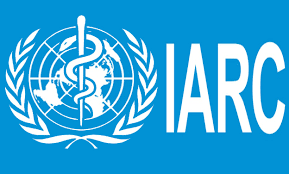Chemycal has been acquired by 3E
Learn MoreChemycal has been acquired by 3E
Learn MoreDiscover how Chemycal PRO helps you boosting your regulatory monitoring:

The International Agency for Research on Cancer (IARC) has just unveiled Volume 131 of its highly anticipated Monographs series, featuring in-depth evaluations of cobalt, antimony compounds, and weapons-grade tungsten alloy. This comprehensive report is now accessible to the public via the official IARC website.
Of particular interest, the IARC Working Group has conducted its first-ever evaluation of two substances: pentavalent antimony and weapons-grade tungsten alloy, which contains nickel and cobalt. The evaluations shed light on the potential health hazards associated with these agents.
The Monographs reveal that antimony, widely used in various applications such as flame retardants, batteries, alloys, and ammunition primers, has been classified as probably carcinogenic to humans (Group 2A). This determination is based on limited evidence of cancer in humans, substantial evidence from experiments on animals, and strong mechanistic evidence observed in human primary cells and experimental systems.
Likewise, cobalt metal and soluble cobalt(II) salts have been categorized as probably carcinogenic to humans (Group 2A). The classification stems from sufficient evidence gathered from animal experiments and compelling mechanistic evidence discovered in human primary cells. Cobalt finds extensive use in industries involved in manufacturing cutting tools, pigments, medical implants, electroplating, and lithium-ion battery production.
The Monographs also designate cobalt(II) oxide and weapons-grade tungsten alloy as possibly carcinogenic to humans (Group 2B), backed by substantial evidence from animal studies. Cobalt(II,III) oxide, cobalt(II) sulfide, other cobalt(II) compounds, and pentavalent antimony, on the other hand, were assessed as not classifiable in terms of their carcinogenicity to humans (Group 3).
Exposure to these agents is expected to be more pronounced in occupational settings compared to the general population, with military personnel and civilians particularly vulnerable to metal aerosols generated during firing or impact, as well as from injuries involving embedded munitions fragments.
The IARC Monographs play a crucial role in providing reliable and evidence-based assessments of potential carcinogens, aiding policymakers, researchers, and health professionals in making informed decisions to safeguard public health.
To access the detailed findings and analysis from Volume 131, visit the dedicated webpage on the official IARC website.
MORE INFO ON www.iarc.who.int
2013 © MyChemicalMonitoring. ALL Rights Reserved. About Us | Terms and Conditions